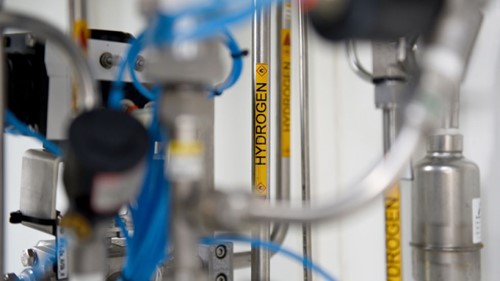News
Sunfire to supply 30-MW alkaline electrolyzer to Uniper
Within the Central German Chemical Triangle, energy company Uniper is implementing green H2 technologies on an industrial scale. In Bad Lauchstädt, Sunfire will supply a 30 megawatt (MW) pressurized alkaline electrolyzer for a demonstration project.

The Bad Lauchstädt energy park, one of the pioneering projects of the energy transition, is entering the execution phase. Uniper has ordered a 30 MW pressurized alkaline electrolyzer from the Dresden-based electrolysis company Sunfire. Its delivery is scheduled for 2024.
The project will realize the production, transport, storage and economic use of green H2 on an industrial scale in Saxony-Anhalt, showcasing new solutions for the future energy infrastructure. Together with its project partners, Uniper is helping to create value and jobs in the region affected by structural change.
Sunfire CEO Nils Aldag said, "With this significant new order, we are making an important contribution to the successful ramp-up of the hydrogen economy as well as to the transformation of the chemical industry in Germany. We are happy to partner with Uniper to further scale up hydrogen production."
The H2 project is not only unique for the Central German region – it is also an important step for ramping up the H2 economy throughout Europe.
"The Bad Lauchstädt energy park covers the entire value chain including the production, transport, storage, distribution and use of green hydrogen. With Sunfire, we have found the ideal partner for realizing the central pillar of the project. Together, we will drive forward the local energy transition," said Axel Wietfeld, CEO Hydrogen at Uniper. “Furthermore, green hydrogen is a promising solution for ensuring a future energy supply that is independent of Russian gas imports.”
Sunfire's 30 MW electrolysis plant is one of the largest planned systems of its kind. At the energy park in Bad Lauchstädt, the electrolyzer will produce green H2 with renewable electricity from a nearby wind farm. In a second phase of the project, the H2 produced can be temporarily stored in a specially equipped salt cavern. Afterwards, it will be fed into the local chemical industries’ H2 network via a repurposed gas pipeline. In the future, it will also be used in urban mobility solutions, for example in H2-powered buses.

